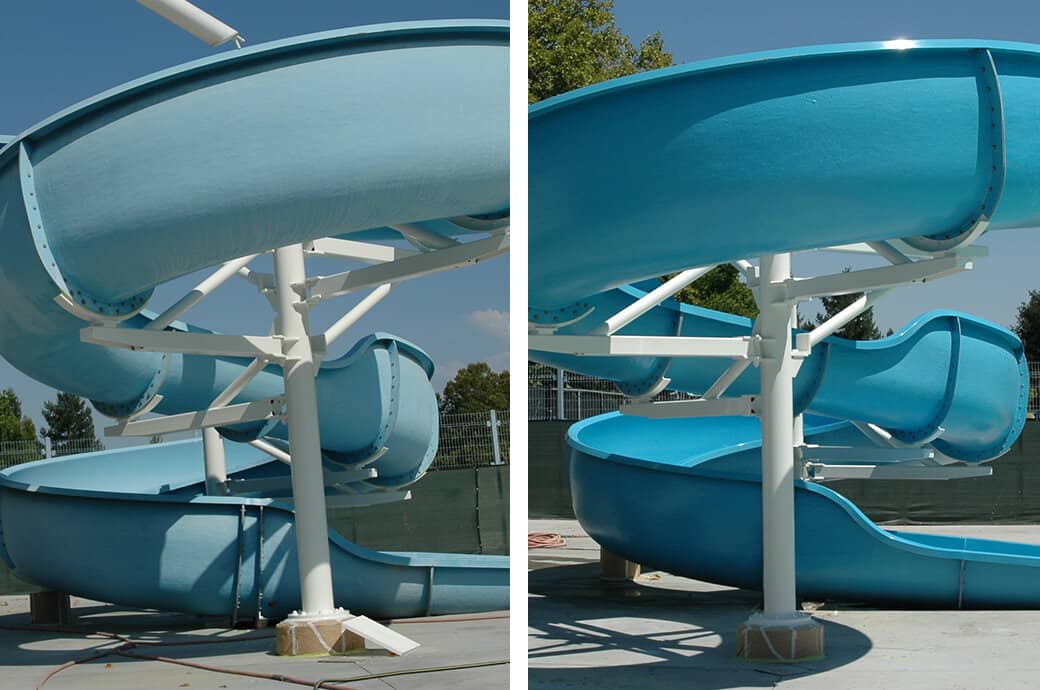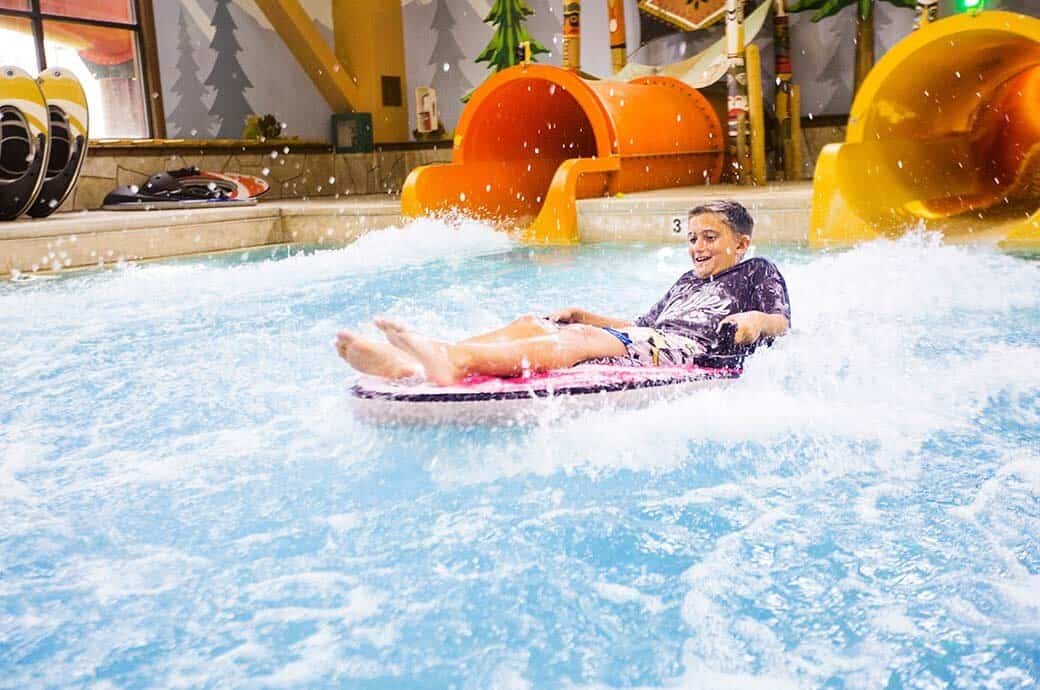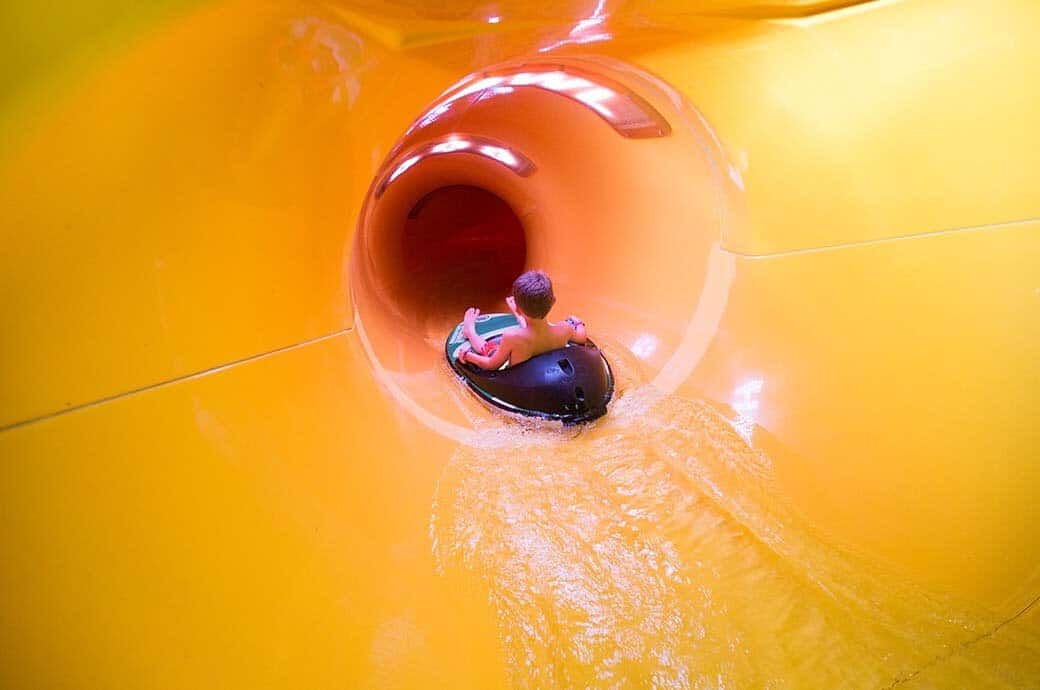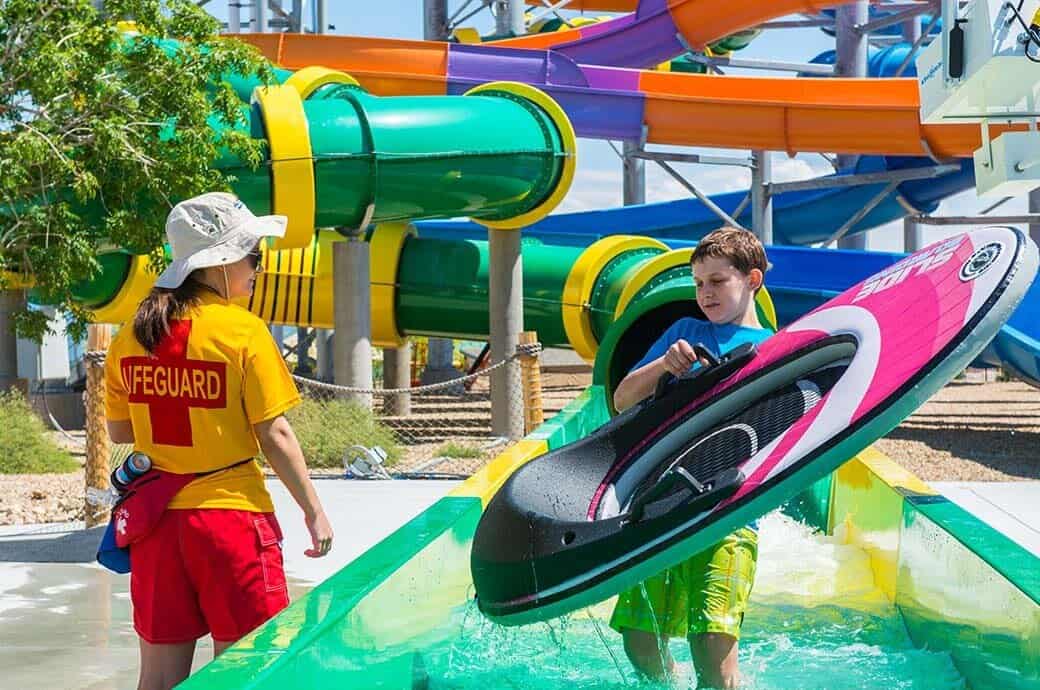
‘Retrofit theming or interactive elements to:
revitalize older body slides
create new appeal for your facility
involve your riders in the design process’
In principle, the idea of injecting new life and excitement into old slides sounds like a good idea… but is it?
Let’s look at what is possible, what’s safe, how proven it is, and if it stacks up cost-wise.
Firstly, let’s be clear about our objectives. Do we want to:
1. make our old hydroslide(s) look new again?
2. create a more exciting ride experience by adding light, sound or interactive special effects?
3. change the slide path geometry, perhaps in response to a safety issue, or just make the ride experience ‘new’ or ‘better’ in some way?
Starting at the top, making older slides look like new will usually involve cutting and polishing the fibreglass or, in some cases, resurfacing. It’s labour intensive but a relatively easy way to spruce things up and prolong lifespan. WhiteWater has a dedicated team that will undertake this work for you.
The revitalised slide may perform differently too, as the newly polished or resurfaced riding surfaces will exert less friction. Test and recommission it before letting the public back on and make sure that the flow rate is still safe, particularly if there are any long, straight sections transitioning into tight turns (unlikely on a WhiteWater slide but more common on some of the older New Zealand-manufactured slides).
Standard hydroslide maintenance should include regular polishing and waxing to protect the ride surface; it’s really an operating cost.
If the ride surface (or outside surface) does need recoating, this will still be a cheaper revitalisation strategy than replacing the slide and, unless there are existing safety concerns with the slide path design, should be investigated.
Moving down our list of objectives, let’s look at adding light, sound and interactive effects.
Most of the older hydroslides in New Zealand (pre-2005) were designed and built by either of 2 local manufacturers; Cresta Composites or Aeromarine Industries. These hydroslides typically start from a platform height of somewhere around 7m and are around 60-70m in length. There are some notable exceptions but most seem to follow this standard slidepath formula.
Unless a slide is particularly slow, riders will likely be travelling between 4m – 6m per second. Ride durations should therefore fall within a range of 11 – 17 seconds. So, what can we do to make these older hydroslides more exciting, particularly with a such short ride times to experience the new effects? Will a hi-spec - hi-tech enhancement or a blunt instrument approach work best?
Globally, hydroslide manufacturers have offered light and sound, including retrofitting these effects into older slides, for many years. New Zealand’s first serious attempt at retrofitting existing hydroslides with audio-visual effects was completed at QEII Park, in 2007, when light and sound were added to 2 body slides. Images back-projected onto water screens inside the flume were also added to a 3 rd slide (1 of the 1–2-person wide diameter innertube slides), but the operating environment proved too difficult and the water screens quickly failed.
Even back in 2007, the budget for this type of revitalisation was a hefty $180,000, which does support the argument that adding light and sound effects to a hydroslide is much cheaper than installing a new one, while equally demonstrating that the costs involved can be substantial.
The 2007 light and sound enhancements at QEII Park were moderately successful. Unfortunately, the quality was much less than expected due to the poor acoustics inside the slides, coupled with rider velocity and riding position (feet first and on their backs). The resulting rider experience was definitely more exciting than having no effects but was quick and blunt, with LED lighting along the slidepath heightening the perception of speed, and booming bass sound to get the adrenalin flowing.
Based on our experience at QEII Park and from WhiteWater’s learnings overseas, our advice is to respect the operating environment and make any audio-visual enhancement simple and durable. As already mentioned, the ride experience is short and the operating environment challenging. Be very clear about the standards and outcomes you expect the supplier to achieve, and have these clearly detailed in the supply and installation contract.
It is also worth noting that flashing lights have been known to trigger epileptic fits in a small percentage of the population. Operationally, it’s extremely important to make riders aware of this possible danger through clearly positioned signage.
Also, if the slide being revitalised was ‘a bit of a snoozer’ to begin with, the addition of light and sound won’t change the fundamental ride experience; it will still be a ‘snoozer’.
Another retrofitting possibility is to add interactive play features. Nearly 10 years ago, WhiteWater introduced ‘Slideboarding’, where the speed and fun of hydroslides intersect with video gaming, as this video clip shows…




Copyright © 2024 WhiteWater NZ | Terms and Conditions | Policy Privacy |Powered By Cosmoweb